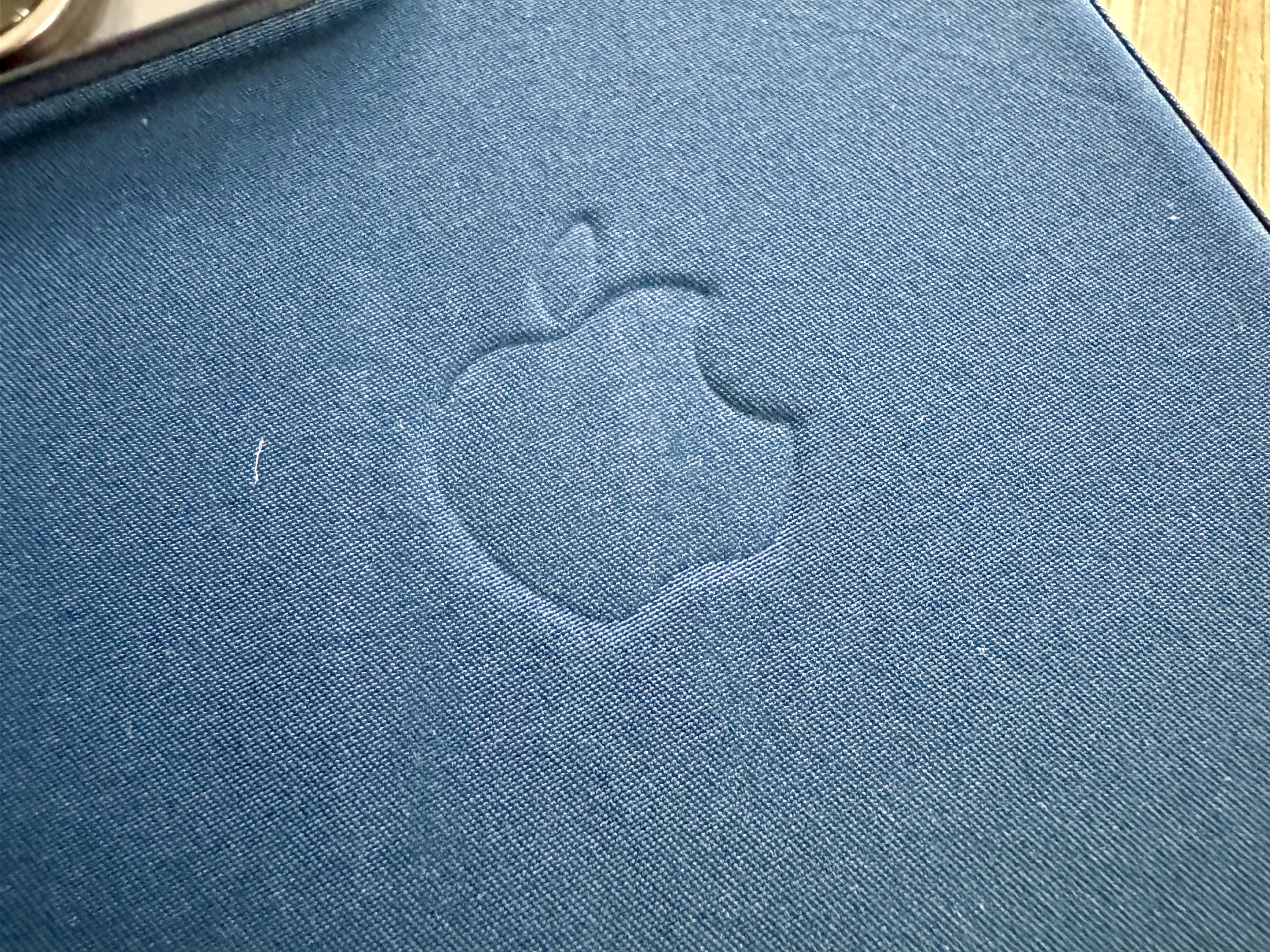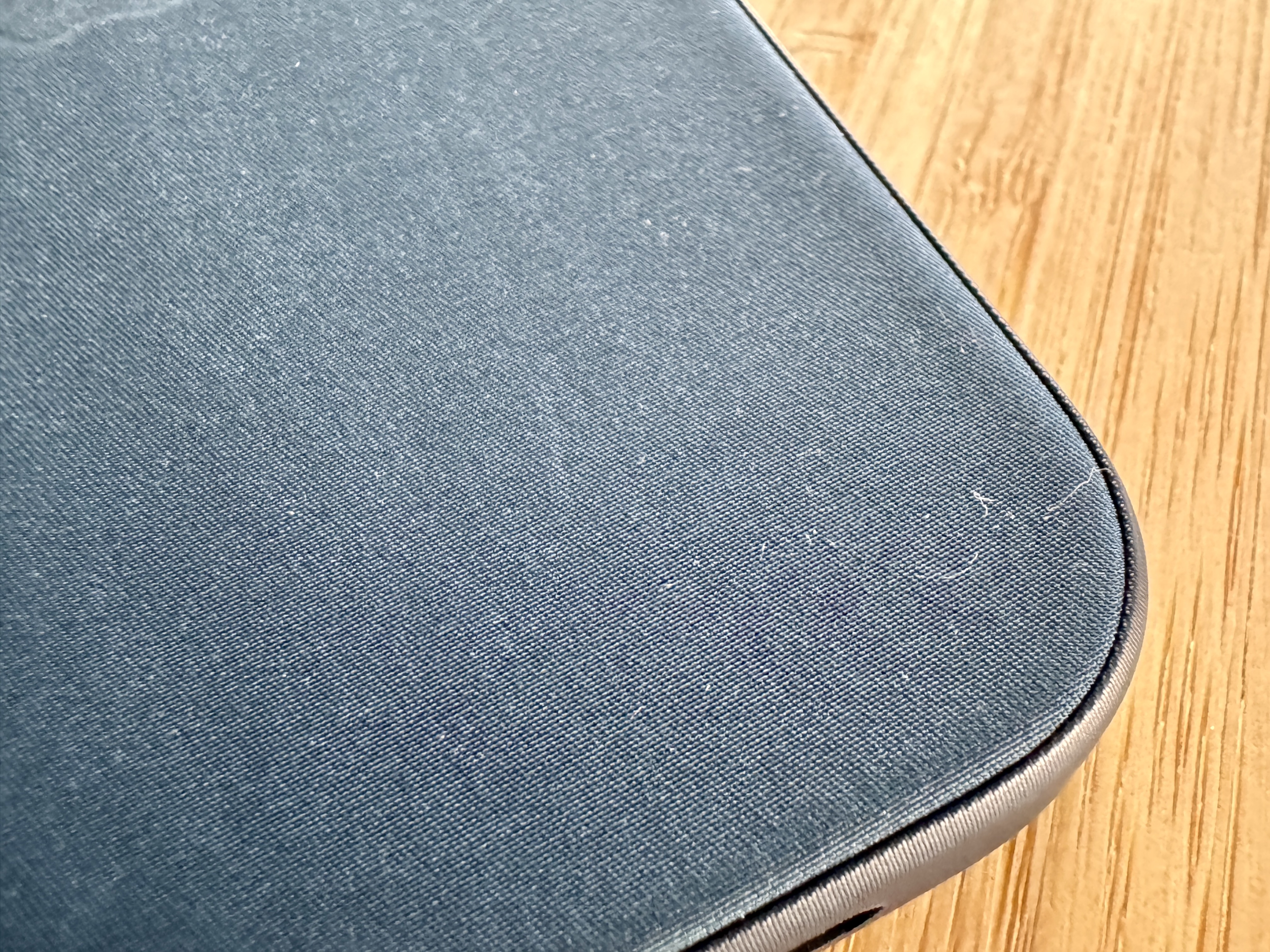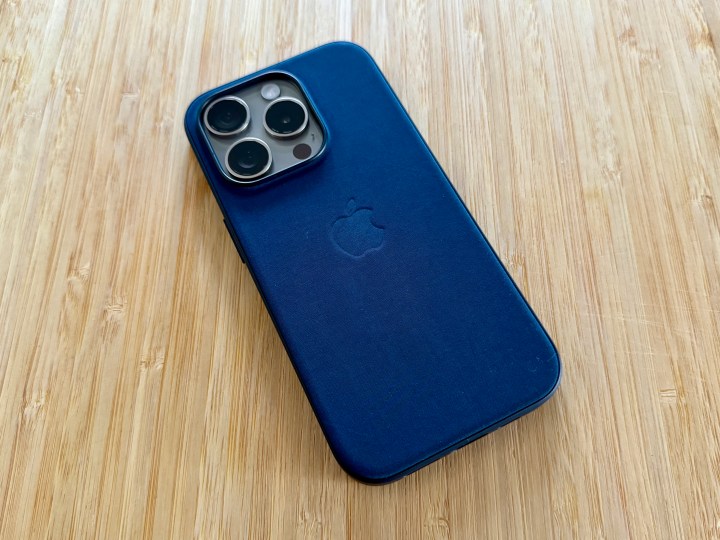
When Apple revealed the iPhone 15 and iPhone 15 Pro during its Wonderlust event, it also announced that in its efforts to be more carbon neutral, it would no longer be selling leather accessories. In place of leather, Apple unveiled a new FineWoven accessory lineup that includes iPhone cases, MagSafe wallets, and even Apple Watch bands.
I typically don’t use Apple’s official cases. I never cared for the silicone ones because it’s too easy for lint to collect around the edges on those, and they tend to stick to the insides of my pockets. The leather ones seemed nice, but I never cared for the open-bottom design of them from several years ago, so I never bought one as I prefer full protection.
I received a Natural Titanium iPhone 15 Pro on loan from Apple, and it came with the Pacific Blue FineWoven case, as well as the FineWoven MagSafe wallet. Within minutes of pulling the case on, I understood the overall negative consensus that the FineWoven accessories seem to be getting.
It feels nice, but durability is questionable
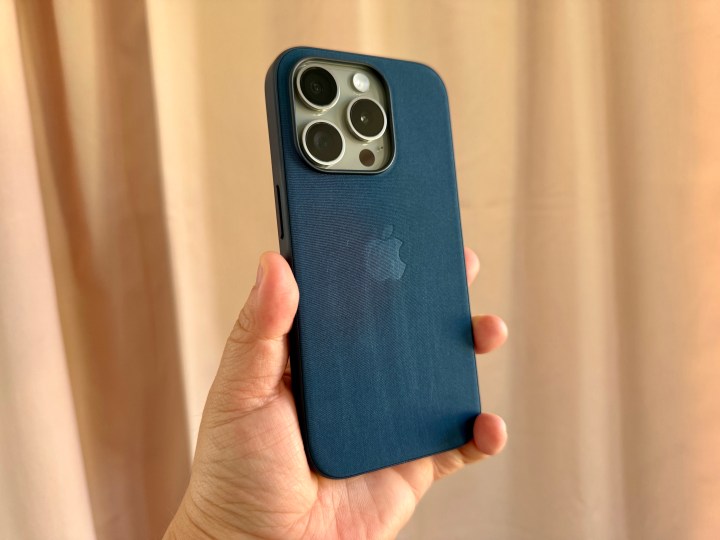
FineWoven is described by Apple as a “luxurious and durable microtwill.” When you touch the material, it definitely has that luxurious, almost silky feel to it. My coworker Andy Boxall called it almost suede-like. And yes, it really does feel nice. But that’s where the good stops, at least for me.
I read many articles over the past few days about the FineWoven accessories, and they all ultimately question the long-term durability of the material. I read that simply running your fingernails across the material will leave marks in it that you aren’t able to just wipe away.
Now imagine if you were to put your phone in the case and then throw it into your pocket with some loose change or keys — or even into a purse with a bunch of stuff inside. There’s a chance that even the mundane action of taking your phone in and out of something could scratch up the case and leave marks that you just can’t get out.
I also noticed that the FineWoven material tends to easily pick up bits of lint and debris as well, and those little bits sometimes just aren’t easy to wipe away either. This reminds me of the silicone in a way, and it drives me nuts.
I’ve read CNET’s article about their FineWoven case having a rough week, and it really shows. From that piece, it seems that even getting some liquid on the FineWoven material (possibly saltwater) leaves permanent stains on the material. And it appears they also dropped their iPhone 15 Pro Max with the FineWoven case into a delectable avocado toast loaded with various toppings, and yes, that definitely left a dark stain, according to the writer, Patrick Holland. Granted, that one is a user error, but still.
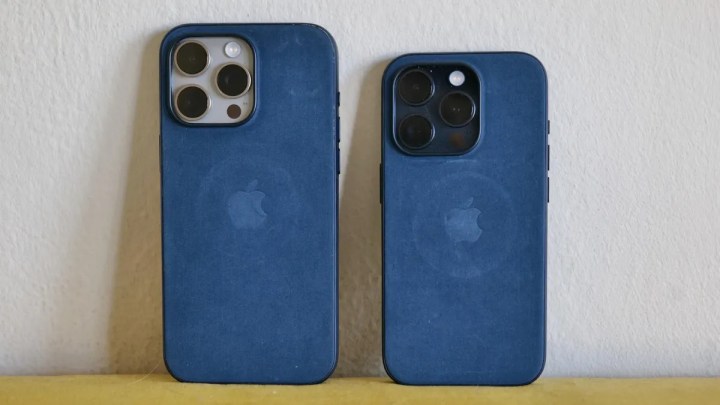
Oh, and don’t forget the fact that if you use a MagSafe charger, that’s also going to leave an imprint marking on the FineWoven case too. Nothing looks as good as a big circle around that Apple logo on your case, right?
The point of a case is to protect the phone, and sure, the FineWoven case will still protect your iPhone 15 from actual damage. But it’s going to look like complete crap doing so. Apple claims that the material “may show wear over time,” but that should mean after weeks or months, not days.
FineWoven is not a replacement for leather

I’m not saying that fabric cases can’t be great. I’ve used some fabric cases in the past, such as . But that fabric is definitely different from what Apple is using — Peak Design’s nylon canvas fabric feels more high quality and is pretty resistant to scuffs, scratches, and even water.
Apple chose FineWoven to be the premium replacement for its old leather options, and it just doesn’t match up. At least with the leather, it would actually look better over time by developing a rich patina, and any scratches or scuffs would really just add to its character. With FineWoven, it just doesn’t seem to age gracefully like leather, and it’s only been about a week since people started using these cases.

Perhaps if FineWoven didn’t cost $59, it wouldn’t be so bad. But for that price, you’d expect a case to be able to not look like garbage after just a few days. It’s also a bit ridiculous that you need to baby the case that is protecting the phone to keep it looking halfway decent. I think FineWoven would have done better as perhaps a $40 case, which would be more reasonable. But at the current price, it’s just a bit absurd.
I’ll give Apple’s FineWoven cases one thing, though, and that’s the incredibly tactile buttons. They have a nice metallic finish and feel very good when you press them. I just wish the rest of the FineWoven case was as nice too.
Editors' Recommendations
- This one Apple Fitness feature completely changed how I exercise
- An Apple insider just revealed how iOS 18’s AI features will work
- iPhone 16: news, rumored price, release date, and more
- iPhone SE 4: news, rumored price, release date, and more
- 3 reasons why I’ll actually use Anker’s new iPhone power bank

